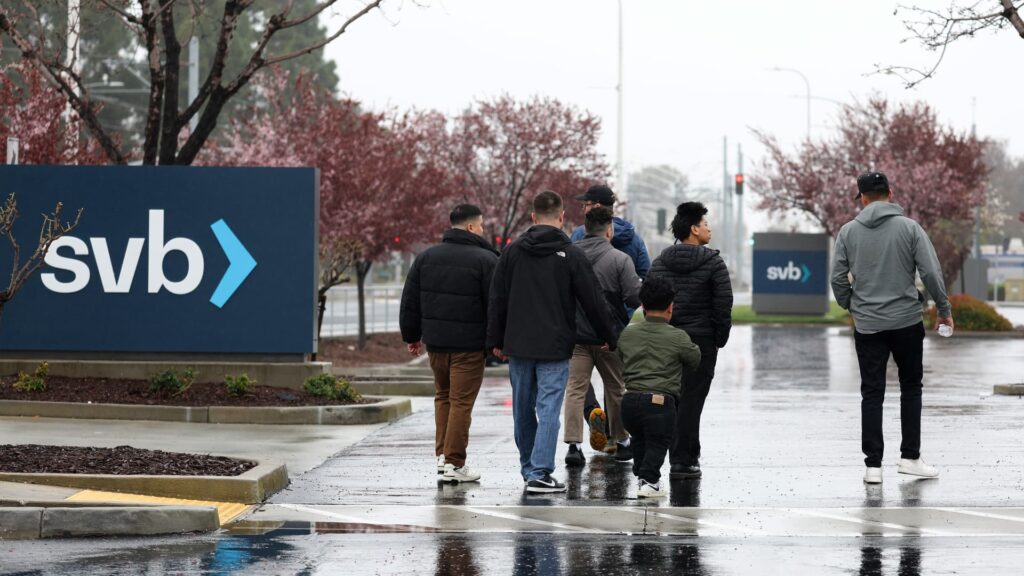Employees stand outside of the shuttered Silicon Valley Bank (SVB) headquarters on March 10, 2023 in Santa Clara, California.
Justin Sullivan | Getty Images
The sudden collapse of Silicon Valley Bank has thousands of tech startups wondering what happens now to their millions of dollars in deposits, money market investments and outstanding loans.
Most importantly, they’re trying to figure how to pay their employees.
“The number one question is, ‘How do you make payroll in the next couple days,'” said Ryan Gilbert, founder of venture firm Launchpad Capital. “No one has the answer.”
SVB, a 40-year-old bank that’s known for handling deposits and loans for thousands of tech startups in Silicon Valley and beyond, fell apart this week and was shut down by regulators in the largest bank failure since the financial crisis. The demise began late Wednesday, when SVB said it was selling $21 billion of securities at a loss and trying to raise money. It turned into an all-out panic by late Thursday, with the stock down 60% and tech executives racing to pull their funds.
While bank failures aren’t entirely uncommon, SVB is a unique beast. It was the 16th biggest bank by assets at the end of 2022, according to the Federal Reserve, with $209 billion in assets and over $175 billion in deposits.
However, unlike a typical brick-and-mortar bank — Chase, Bank of America or Wells Fargo — SVB is designed to serve businesses, with over half its loans to venture funds and private equity firms and 9% to early and growth-stage companies. Clients that turn to SVB for loans also tend to store their deposits with the bank.
The Federal Deposit Insurance Corporation, which became the receiver of SVB, insures $250,000 of deposits per client. Because SVB serves mostly businesses, those limits don’t mean much. As of December, roughly 95% of SVB’s deposits were uninsured, according to filings with the SEC.
The FDIC said in a press release that insured depositors will have access to their money by…
Read the full article here





